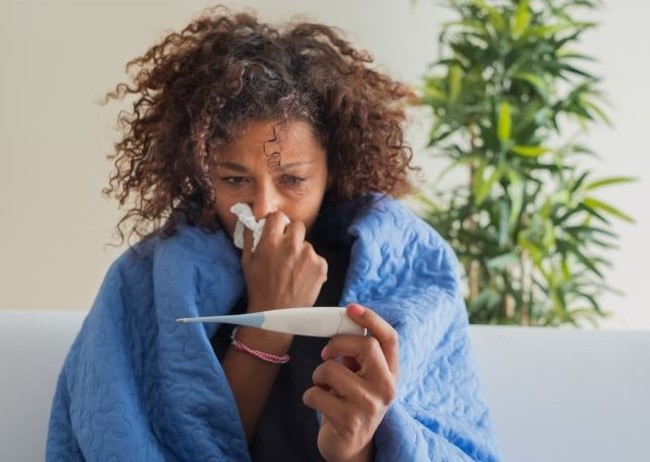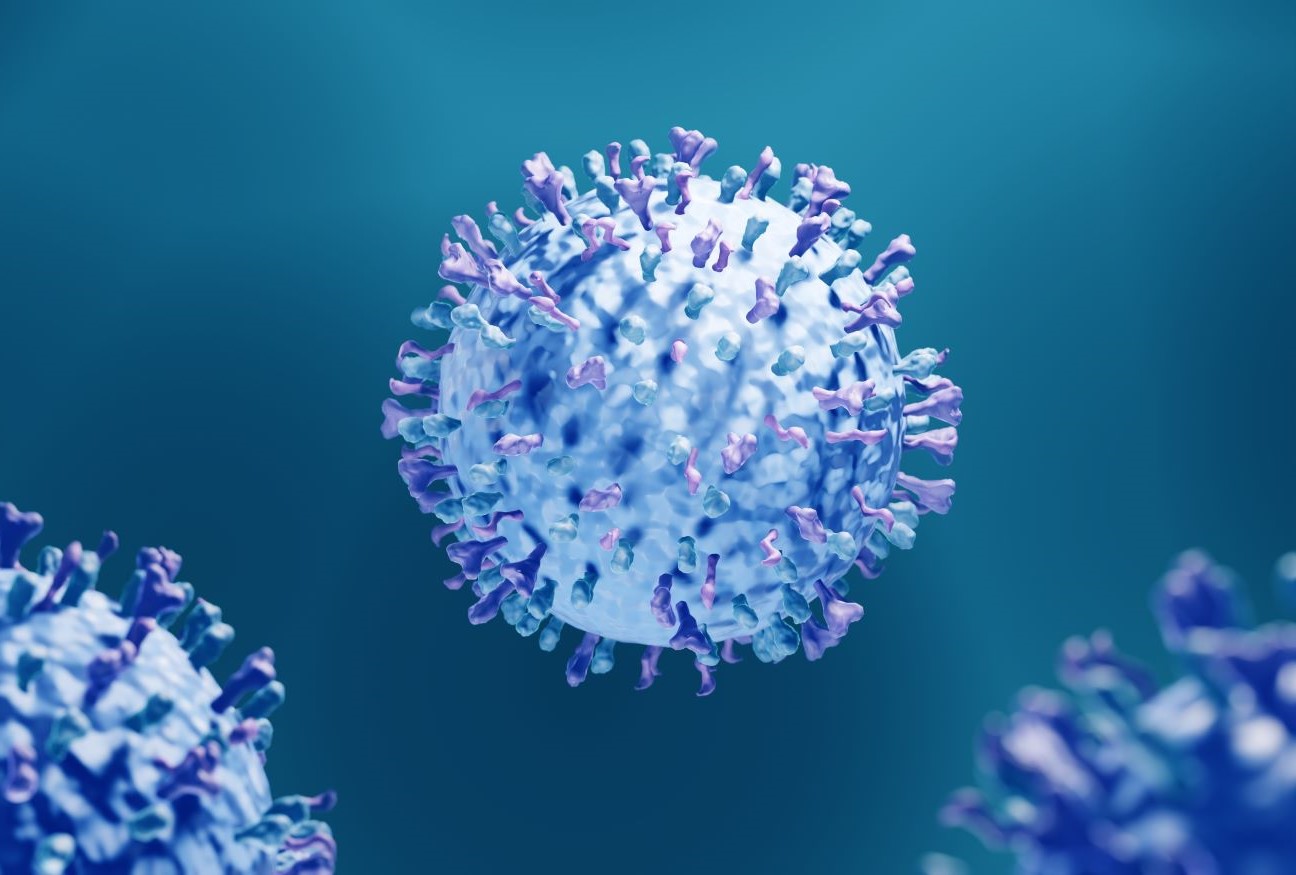2025 Public Health Laboratory Newsroom
Minnesota’s Global Leadership in Tracking RSV
Respiratory syncytial virus (RSV) is a common infection that inflames the nose, throat, and lungs. It is often confused with the common cold but is more dangerous to certain populations. Babies 6 months old and younger and adults over the age of 75 are the most likely groups to be hospitalized with RSV. An infection can lead to the more serious illnesses of pneumonia and bronchiolitis.
 In May 2023, the Food and Drug Administration (FDA) approved a vaccine for RSV. The Centers for Disease Control and Prevention (CDC) advises parents to immunize their babies during late pregnancy or, in some circumstances, very soon after birth. These immunizations are based on monoclonal antibodies, which are not technically vaccines. There is also a vaccine for RSV that the CDC recommends to anyone 75 or older and people aged 60-74 who are at increased risk of respiratory illness.
In May 2023, the Food and Drug Administration (FDA) approved a vaccine for RSV. The Centers for Disease Control and Prevention (CDC) advises parents to immunize their babies during late pregnancy or, in some circumstances, very soon after birth. These immunizations are based on monoclonal antibodies, which are not technically vaccines. There is also a vaccine for RSV that the CDC recommends to anyone 75 or older and people aged 60-74 who are at increased risk of respiratory illness.
Tracking how viruses change
Many viruses that cause seasonal respiratory illnesses, like RSV, gain mutations very quickly. RSV viruses around the world have different patterns of mutations that give them slightly different traits. Scientists can study these patterns and use them to assign these viruses into smaller groups, known as variants.
 Some viral variants gain mutations that make immunizations less effective. Finding and tracking these mutations can help scientists gauge the risk of RSV infections and inform public health responses to prevent and control the spread of high-risk variants.
Some viral variants gain mutations that make immunizations less effective. Finding and tracking these mutations can help scientists gauge the risk of RSV infections and inform public health responses to prevent and control the spread of high-risk variants.
The relatively recent technological breakthrough of whole-genome sequencing (WGS) has become critical to creating and maintaining vaccines for infectious diseases. Scientists collect many samples of a virus and use whole-genome sequencing to map out, or “sequence,” all of its genetic material, or its “genome.” They then share this genomic information publicly by submitting it to international databases. With this data from laboratories around the world, vaccines can be developed and maintained much more quickly.
Whole-genome sequencing at the Minnesota Public Health Laboratory
The Minnesota Public Health Laboratory, a division of the Minnesota Department of Health, mostly used whole-genome sequencing for studying foodborne illnesses until the COVID-19 pandemic. In 2020, it and many other laboratories around the world expanded their sequencing capacities to also analyze SARS-CoV-2, the virus causing COVID-19. The new technology and worldwide collaboration led to a vaccine being developed in less than one year. Previously, the fastest development time for a vaccine had been 4 years, for mumps.
The Minnesota Public Health Laboratory continues to collect and sequence samples of SARS-CoV-2 to help keep vaccines up to date. However, because fewer SARS-CoV-2 samples are being collected than during the peak of the pandemic, the lab can devote time and resources to other viruses as well.
Currently, the Minnesota Public Health Laboratory (MN-PHL) is taking a leadership role in sequencing samples of RSV. Over the last two respiratory seasons (i.e., the period in which respiratory diseases are most prevalent) since 2023, the lab has outpaced all other laboratories in the United States in sequencing RSV samples and publicly sharing data to the international database Global Initiative on Sharing All Influenza Data (GISAID):
| Respiratory season | RSV genomes contributed by MN-PHL | RSV genomes contributed worldwide | Percent contributed by MN-PHL |
|---|
| Sept. 1, 2023 - April 30, 2024 | 1034 | 8053 | 12.8% |
| Sept. 1, 2024 - April 30, 2025 | 2029 | 7674 | 26.4% |
| Total | 3063 | 15727 | 19.5% |
(Data retrieved 6/6/2025)
For the sake of comparison, the population of Minnesota comprises 0.06% of the world total. The wealth of data provided by the Minnesota Public Health Laboratory is crucial for keeping the RSV vaccine effective for people across the globe.
Other state public health laboratories are aware of the accomplishments of the Minnesota Public Health Laboratory and have visited to learn about sequencing RSV. Minnesotan laboratory and research scientists have spoken at conferences to help colleagues launch their own sequencing programs.
The Minnesota Public Health Laboratory’s success in sequencing RSV depends on receiving many samples of the virus. Most RSV samples are sent voluntarily by Minnesotan health care providers. The Infectious Disease Epidemiology, Prevention and Control (IDEPC) and the Public Health Laboratory Divisions of the Minnesota Department of Health have spent decades building strong relationships with doctors, hospitals, and clinics, encouraging close cooperation. Read more about this vital work in our Minnesota Public Health Laboratory Remains Central to Tracking COVID-19 article.
Beyond RSV, the Minnesota Public Health Laboratory maintains one of the strongest resources in the country for using genome sequencing to fight infectious diseases. The lab receives special funding from the CDC to support nearby states with resources, training, and guidance to use this technology to support their citizens. Minnesota scientists also hold leadership roles in national level public health organizations, through which they share their knowledge and experience with the rest of the country to strengthen the science of public health.
In a larger sense, the ability of the Minnesota Public Health Laboratory to sequence a high volume of biological samples is a vital resource. It is a powerful tool for combating the wide range of pathogens that threaten human health. The Minnesota Public Health Laboratory works at the cutting edge of this field and will continue to use whole-genome sequencing to keep people safe from preventable infectious diseases.
Return to the 2025 Public Health Laboratory Newsroom.